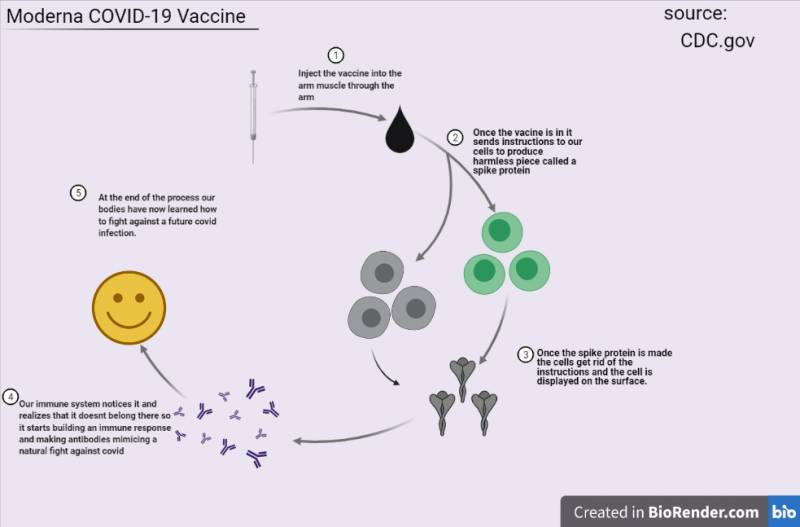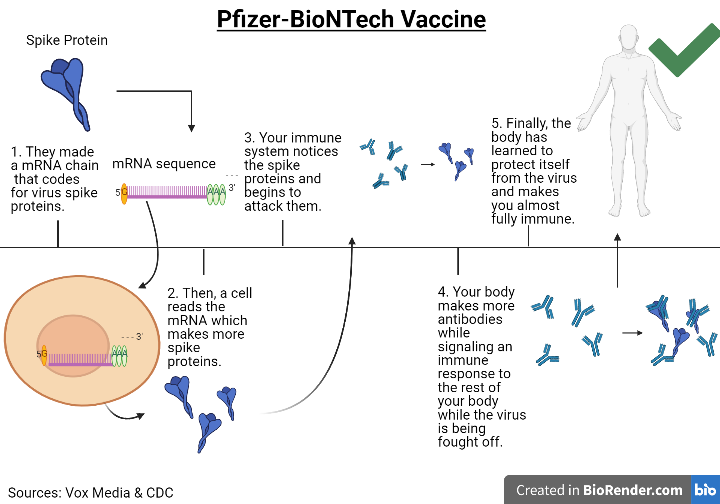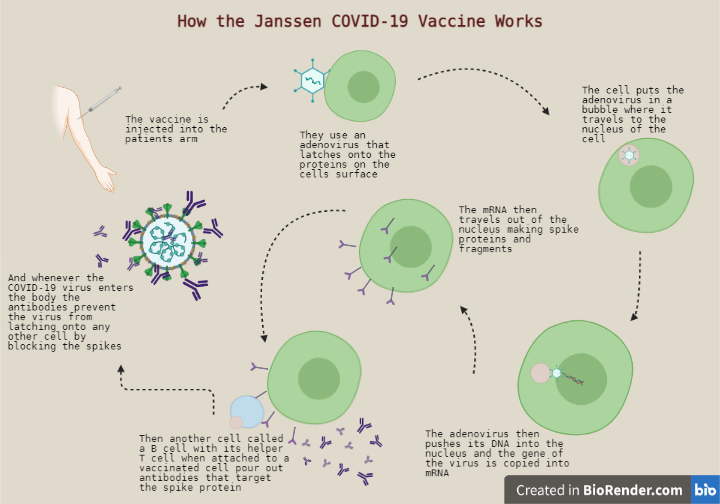Merek Chang is a high school chemistry and engineering teacher in Southern Califronia and is a KQED Media Literacy Innovator. Learn how to incorporate infographics into your STEM classroom at our workshop on April 29 at 4pm PT: Infographics to Strengthen Data Literacy and Student Voice in Science.
If you’re a high school biology teacher like me, transcription and translation (also known as protein synthesis or the central dogma of DNA) are not necessarily the most exciting material. But with viral vector and mRNA COVID-19 vaccines in the forefront of the daily news cycle, it gave me an idea on how to make protein synthesis more relevant to my freshman students. Both mRNA (used in the Pfizer-BioNTech and Moderna vaccines) and DNA (used in the Johnson and Johnson vaccine) are key pieces in the process of protein synthesis. To help them learn this process, I had them create an infographic on how the various COVID-19 vaccines work.
During distance learning, measuring student understanding of content through traditional multiple choice and free response exams has been difficult. Instead, I have turned to media making projects where students have to demonstrate their mastery of the content through their ability to present and communicate what they have learned with others. Through the process of creating their COVID-19 infographics, students had to evaluate online sources, analyze different forms of media and present information in a manner which made sense to them.
For this project I used BioRender, a free infographic and poster generator to be used specifically for science projects. I gave my students some basic infographic templates, video and online resources on the different COVID-19 vaccines, and a rubric to follow to generate their infographics. Students used existing sources to research their infographics, but independently wrote the steps and chose the images for their infographic through BioRender.


